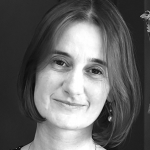
Varvara P. Kalyuzhnaya
Gnesin Russian Academy of Music, Moscow, Russia,
v.kalyuzhnaya@gnesin-academy.ru, https://orcid.org/0009-0006-8591-6684
|
| Abstract: The article is devoted to identifying forms of interaction between two cultural models, traditional and Christian, in one of the Upper Oka calendar traditions, localized in the eastern part of the Kaluga region. An analysis of the musical and poetic texts that fill the local folk calendar, as well as some ritual practices, reveals their close connection with the Orthodox church tradition. Presumably this phenomenon is due to the unique historical and cultural landscape that developed in the east of the Kaluga province, one of the most important elements of which was a high concentration of monasteries. Identification of the mechanisms of interaction between two cultural systems based on the material of the Upper Oka calendar tradition demonstrates not only its originality, but also the possibility of studying other song systems from a similar perspective, which, in turn, can expand the research understanding of the multidimensionality of folk culture.
Keywords: сhristian culture, folk culture, cultural interaction, folk calendar, riddle songs, spring calls, Troparion of Easter, Troparion of the Nativity
For citation: Kalyuzhnaya V. P. Church component in the calendar tradition of the south-eastern districts Kaluga region. Scholarly papers of Gnesin Russian Academy of Music. 2025;(1):62-77. (In Russ.). DOI: 10.56620/2227-9997-2025-1-62-77
|
References
- Tolstaya S.M. Khristianstvo i narodnaya kul’tura: mekhanizmy vzaimodeistviya [Christianity and Folk Culture: Mechanisms of Interaction]. Tolstaya S.M. Obraz mira v tekste i rituale [The Image of the World in Text and Ritual]. Moscow: Russkii fond sodeistviya obrazovaniyu i nauke, 2015. P. 111−120.
- Sheremeteva M.E. Zhenskaya odezhda v b. Peremyshl’skom uezde Kaluzhskoi gubernii [Women’s Clothing in the Former Peremyshl District of Kaluga Province]. Kaluga, 1929. 56 p.
- Beglov A.L. Tainye monasheskie obshchiny sovetskogo perioda. Problemy tipologii [Secret Monastic Communities of the Soviet Period. Problems of Typology]. Vestnik PSTGU [Bulletin of PSTGU]. Issue 108. 2022. P. 126–151. DOI: 10.15382/sturII2022108.126-151
- Russkie krest’yane. Zhizn’. Byt. Nravy. Materialy “Etnograficheskogo byuro” knyazya V. N. Tenisheva [Russian Peasants. Life. Life Manners. Materials of the “Ethnographic Bureau” of Prince V.N. Tenishev]. Vol. 3. Kaluzhskaya guberniya [Kaluga Province]. St. Petersburg: Delovaya poligrafiya, 2005. 648 p.
- Podrezova S.V. “Krichat’ Khrista”: Paskhal’nyi tropar’ v russkoi fol’klornoi traditsii [“Crying out Christ”: Easter Troparion in the Russian Folklore Tradition] St. Petersburg: Izdatel’stvo Evropeiskogo universiteta v Sankt-Peterburge, 2021. 510 p.
- Goryanina N.Yu. “Khristoskat’ mozhno…” (paskhal’nyi tropar’ v predpaskhal’nyi period) [“You can say Christ…” (Easter Troparion in the Pre-Easter Period)]. Ekspeditsionnye otkrytiya poslednikh let: Stat’i i materialy [Expedition Discoveries of Recent Years: Articles and Materials]. Vol. 2. Narodnaya muzyka, slovesnost’, obryady v zapisyakh [Folk Music, Literature, Rituals in Recordings of 1982−2006] St. Petersburg: Dmitrii Bulanin, 2009. P. 92−97.
- Ismagilova E.I. Pravoslavnye pesnopeniya v fol’klornykh traditsiyakh sibirskogo bytovaniya [Orthodox Chants in Folklore Traditions of Siberian Existence]. Novosibirsk: Nauka, 2021. 240 p.
- Engovatova M.A. Paskhal’nyi tropar’ “Khristos voskrese” v narodnoi pesennoi traditsii zapadnykh russkikh territorii [Easter Troparion “Christ is Risen” in the Folk Song Tradition of Western Russian Territories]. Ekspeditsionnye otkrytiya poslednikh let. Narodnaya muzyka, slovesnost’, obryady v zapisyakh 1970–1990-kh godov. Stat’i i materialy. [Expeditionary Discoveries of Recent Years. Folk Music, Literature, Rituals in Recordings of the 1970s–1990s. Articles and Materials]. St. Petersburg: Dmitrii Bulanin, 1996. P. 72–87.
|


